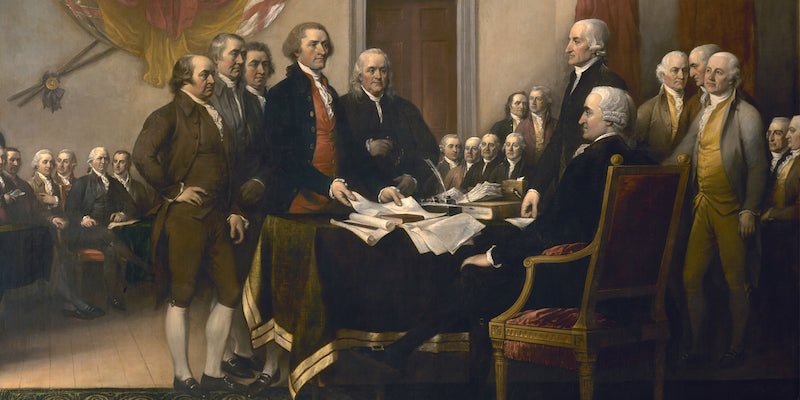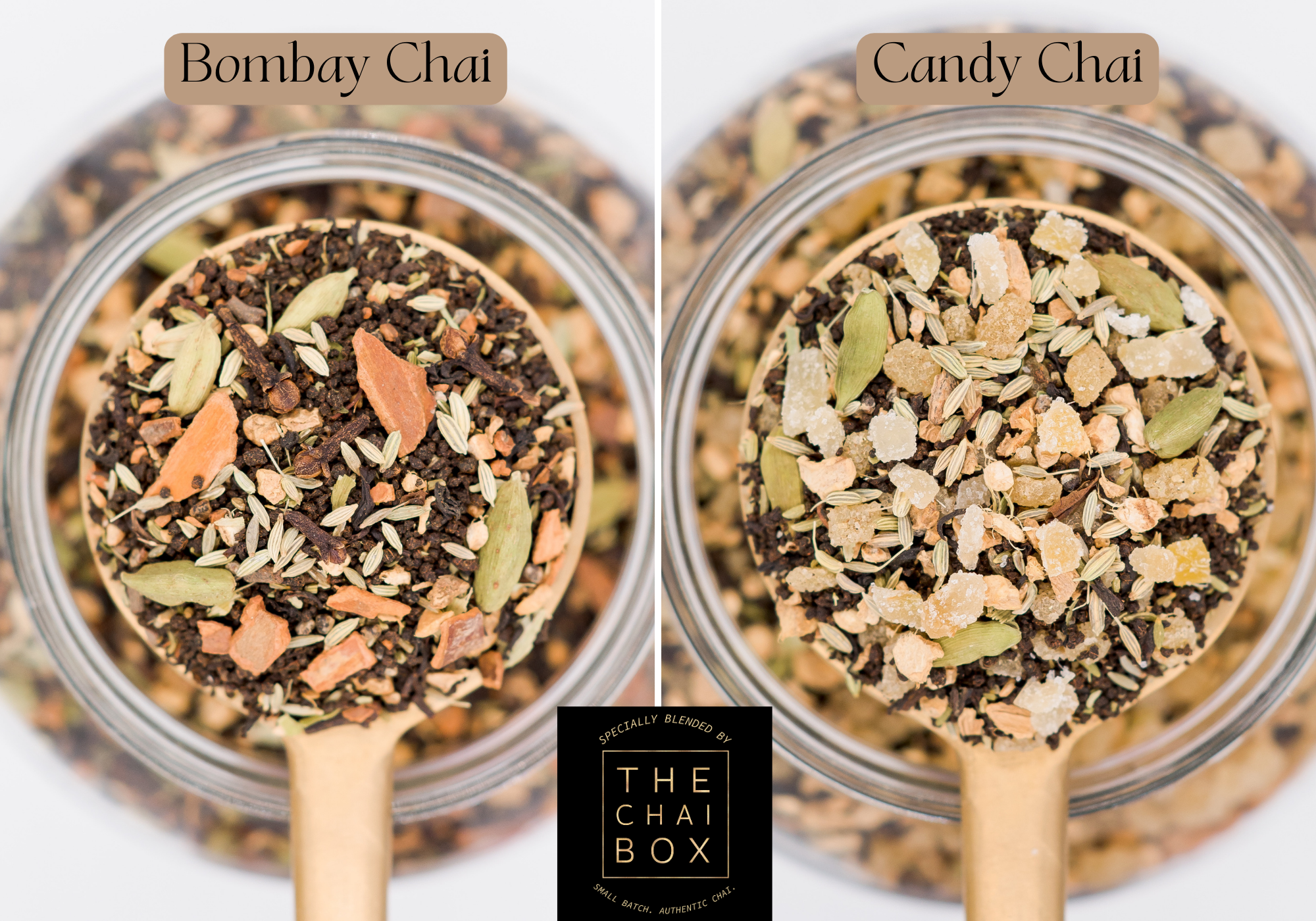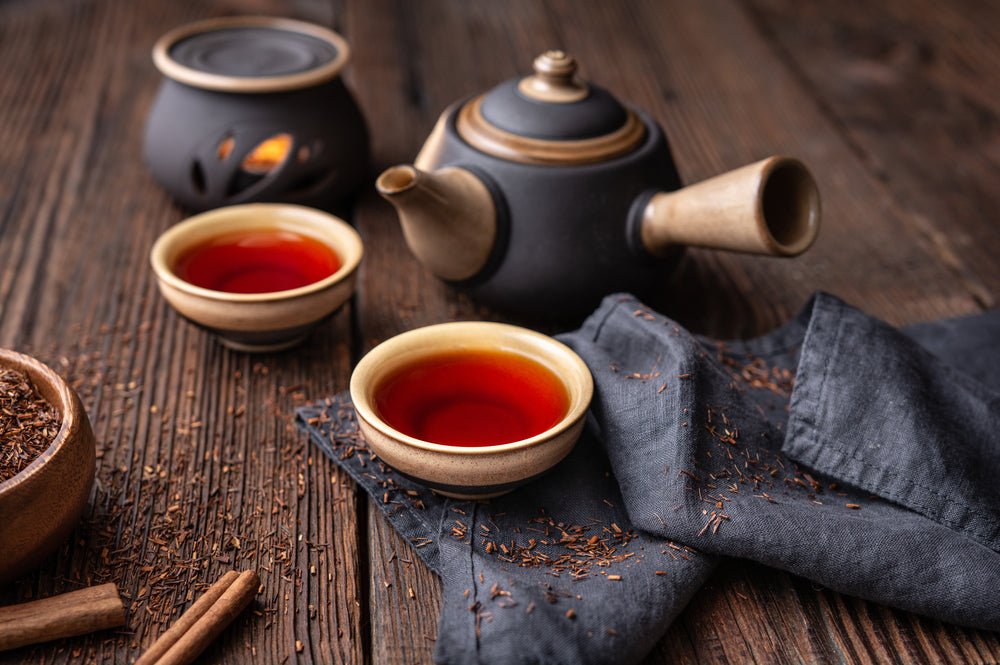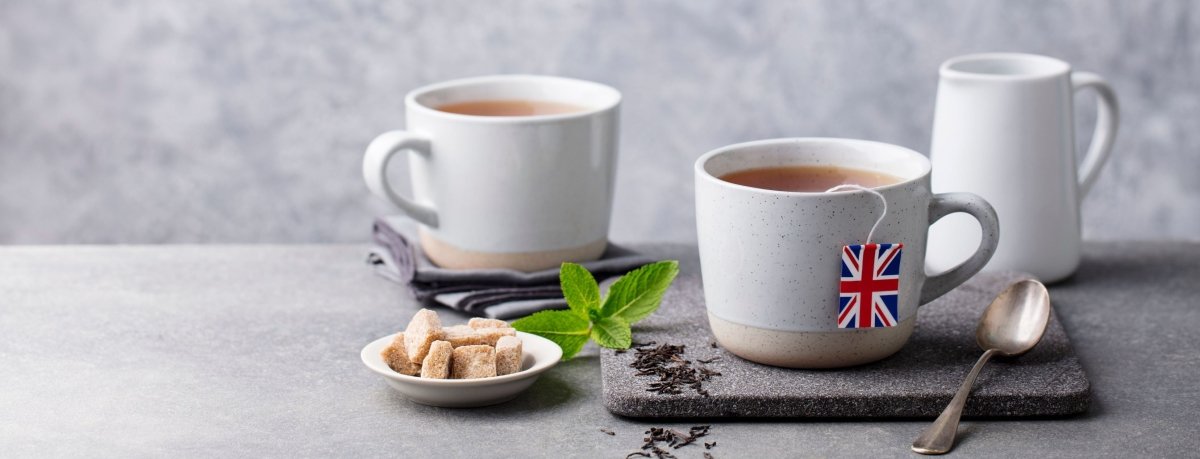
Tea with the Presidents
Although many colonial Americans in 1773 enjoyed dumping 92,000+ pounds of tea into Boston Harbor, drinking tea in the United States did not stop after the Boston Tea Party. In fact, our nation’s most important and highest-elected officials have continued to prefer tea over coffee with each passing administration. In celebration of President’s Day, we take a stroll down memory lane and discuss some of the tea-drinking habits of our former presidents. Grab your favorite cuppa, settle in, and enjoy.
Which presidents drank tea?
George Washington
We know our first President, George Washington, enjoyed several different types of tea, but records show that he consistently ordered both black and green tea from different places around the world.

In 1757, nearly 16 years before the Boston Tea Party, George Washington wrote to England ordering, “6 lb. best Hyson Tea" and "6 lb. best Green Ditto.” Hyson and Green Ditto are green teas. This was the first recorded instance of George Washington ordering tea from overseas, although we suspect he ordered much more before then. Our Gunpowder loose leaf green tea is like hyson, except hyson was historically a lower-grade green tea compared to gunpowder.
Records also indicate George drank a lot of black tea, specifically Bohea and Congou. Bohea (pronounced “boo-hee”) was the most popular tea imported during colonial times, often referred to as Bohea Souchong or Lapsang Bohea. Bohea is a unique blend of black and oolong teas that originate from the WuYi mountain region. This black tea blend became so popular that Bohea became a slang word for tea in the late 1700s. Indeed, during the Boston Tea Party, over 240 chests of Bohea were destroyed–the most of any type of tea aboard the British ships.
Thomas Jefferson
Our third U.S. President, Thomas Jefferson, loved tea so much he had his very own tea room at his estate in Monticello. Before he became our 3rd president, Jefferson was famous for penning the Declaration of Independence. Records suggest that he authored the Declaration of Independence in his tea room in Monticello in 1776… see what drinking a good cup of tea can do for you?!

Tea Room at Monticello (see full gallery here)
In the book Tea with Presidential Families, the author reports that although Thomas Jefferson’s “first recorded order was for Bohea, Jefferson's taste later changed to Hyson, which became his favorite from 1809-1816.” Jefferson’s financial records also show that he was an adventurous tea drinker, ordering different teas named “Imperial” and “Chu-chong.” In a letter to a Philadelphia tea merchant and grocer in 1794, Jefferson said he enjoyed “about 20. lb. of good tea annually…” That’s about 4,500 2-gram cups of tea, or 12 cups a day!
Abraham Lincoln
Although the accounts are not as detailed, Abraham and Mary Todd Lincoln enjoyed drinking tea on a daily basis. They would purchase their tea locally from a shop in Springfield, Illinois, and records from the shopkeeper show that Abraham used to say, “Colonel, my wife tells me that we are out of tea. Put up a pound of your best.”
Andrew Johnson
President Andrew Johnson loved tea so much that he had his own special teapot… in the shape of a steam engine. The locomotive tea set had an interesting history before it fell into the hands of our 17th U.S. president. The tea pot train set was initially a gift from France to Confederate President Jefferson Davis. After the Confederacy lost the Civil War, the tea pot set changed hands a few more times before it was purchased by Colonel Friedman of Philadelphia who intended to gift the tea set to Abraham Lincoln. Unfortunately, President Lincoln was assassinated before he received the gift, so Colonel Friedman presented it to President Johnson instead. Today, the locomotive tea set can be viewed in Tusculum College in Greeneville, Tennessee.

Read more about the famous locomotive tea set here.
Rutherford B. Hayes & William LeDuc
Rutherford B. Hayes, our 19th U.S. president, was instrumental in growing the tea industry here in the United States. In 1877, President Hayes appointed William LeDuc of Minnesota to be the fourth United States Commissioner of Agriculture. LeDuc, who felt that agriculture was the “fundamental industry” of the U.S., advocated diversifying farming so that the United States could produce “everything now imported from other nations," which obviously included tea. As part of this effort, LeDuc introduced tea farming to several southern states but was unsuccessful in this venture primarily due to the climate and other competitive crops farmers wanted to grow instead of tea.
Although LeDuc's efforts at bringing large-scale tea production to the U.S. proved futile, LeDuc’s experience inspired him to experiment with the tea plant himself. To facilitate this endeavor, he received approval from President Hayes to lease 200 acres of land on behalf of the United States outside Summerville, South Carolina. After LeDuc left office in 1884, the tea experiments stopped, but a few years later, other tea pioneers would pick up where LeDuc left off. The tea farm in Summerville changed hands over the next 100 years. Lipton purchased a portion of it in 1963 and took some of those tea plants to Wadmalaw Island, which marked the beginning of the Charleston Tea Plantation. Today, the Charleston Tea Plantation is one of the few tea-producing farms in the U.S. and is owned by Bigelow.

Teddy Roosevelt
Our “rough rider” 26th President of the U.S., Teddy Roosevelt, loved American food and had very little appetite for anything non-American, except for a little indulgence known as Hu Kwa tea—aka Lapsang Souchong. The name “Hu Kwa” actually derived from a Chinese merchant who was famous for selling high-quality Lapsang Souchong to Americans many decades before Roosevelt’s presidency.
George H.W. Bush
Before becoming our 41st president, George H.W. Bush served as the U.S. diplomatic chief to China in the mid-1970s. During his time in Beijing, the locals referred to him (and his envoy) as the “bicycle-riding envoy” because he could be spotted riding his bike through the capital’s narrow alleyways and engaging with locals in a down-to-earth manner. While in China, President Bush developed a love for green tea that he continued to foster throughout the 80s and into his presidency in the early 90s.
Barack Obama
Many wonder about the big red button on the president’s desk (it’s not a nuclear bomb button, as some may think). It is true that at one point the button was used for emergencies, but in recent presidencies, it’s been used to summon food and drink. During President Obama’s time in office, Obama used the big red button to summon tea and reportedly always had a cuppa with his morning briefings. In 2014, the Boston Globe noted, “Scour through a series of photos of him — in the Oval Office, aboard Air Force One, inside the Situation Room — and he almost always has a cream-colored, gold-trimmed porcelain cup in front of him. We don’t know exactly what’s in those cups, but aides suggest they’re filled with tea.”
Enjoy the President's Day holiday, hopefully with a big cup of your favorite TWT tea.




Leave a comment
This site is protected by hCaptcha and the hCaptcha Privacy Policy and Terms of Service apply.